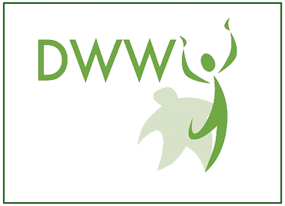Working with Deaf Communities to Make Public Health Data and Programming Accessible
ROCHESTER PREVENTION RESEARCH CENTER/NATIONAL CENTER FOR DEAF HEALTH RESEARCH
Public Health Problem
Surveillance data are critical for public health research, yet people who are deaf or have hearing loss are often excluded from data collection. People who use American Sign Language (ASL) and people with hearing loss are often overlooked and underserved by health care, health research, and public health programs. Without health surveillance data, health departments cannot identify health disparities or create effective, evidence-based interventions.
Rochester, New York, is home to the largest population per capita of people who are deaf or have hearing loss in the United States. Historically, the Monroe County Department of Public Health (MCDPH) has conducted its own telephone-based surveillance—similar to CDC’s Behavioral Risk Factor Surveillance System—to gather data on behavioral risk factors. Because deaf or hard-of-hearing people could not participate, MCDPH had no health data from the large deaf population in their county.
PRC Response
During its first funding cycle from 2004 to 2009, the Rochester Prevention Research Center (RPRC)/National Center for Deaf Health Research (NCDHR) and MCDPH developed the Rochester Deaf Health Survey (RDHS) to complement their existing surveillance efforts. The RDHS used custom survey software designed to conduct surveys in ASL. The survey used RPRC/NCDHR’s pre-recorded videos to present study information, survey instructions, and survey question and response options in ASL. RPRC/NCDHR provided expertise in community-based participatory research with Deaf communities, survey development, data collection, and data analysis.
In 2008, the Rochester Deaf community participated in broad public health surveillance in ASL. Over 300 people responded to the first RDHS, and findings were shared with Deaf communities via community forums. Rochester Deaf communities selected health research priorities to be addressed based on the RDHS findings, representing the first time a deaf community used its own data to identify health priorities. Community priorities were obesity, intimate partner violence, and suicide risk.

Based on the community-identified priorities, RPRC/NCDHR worked closely with partners to develop an intervention to prevent and address overweight and obesity with sign language users. The result was Deaf Weight Wise (DWW), an adaptation of the evidence-based Weight Wise program developed by the PRC at the University of North Carolina. During 2009–2014, RPRC/NCDHR assessed the effectiveness of DWW with a randomized control trial of 104 deaf adults ages 40 to 70. This was the first randomized trial of a health intervention conducted with deaf sign language users.
“We are fortunate to partner with RPRC/NCDHR to help connect public health and Deaf communities to collaboratively identify and address health disparities.”
Accomplishments
DWW was successful as a community-engaged research project and a healthy lifestyle intervention. At 6 months, participants in the DWW intervention lost on average 7.4 pounds compared with those who did not yet participate in the DWW intervention. More than half of all participants in the DWW intervention lost at least 5% of their baseline weight.
These results demonstrate that DWW, a culturally appropriate and language-accessible behavioral intervention, was successful with this underserved and rarely studied population. RPRC/NCDHR presented an abstract at the American Heart Association’s Epidemiology and Prevention/Nutrition, Physical Activity, and Metabolism 2014 Scientific Sessions conference, and later published study results in Circulation, the peer-reviewed journal of the American Heart Association/American Stroke Association.
Since completing the initial DWW randomized trial, RPRC/NCDHR continues to partner with Deaf people who use ASL and people with hearing loss in Rochester. In 2013, they completed a second Deaf Health Survey with community members and have used the data to inform community initiatives. In the 2014–2019 funding cycle, the PRC made modifications to DWW and developed the DWW 2.0 randomized trial. DWW 2.0 addressed the request from communities for RPRC/NCDHR to include younger Deaf adults in DWW research.
“Deaf Weight Wise was a great research project for the Deaf community! DWW gave us information about healthy eating and exercise habits. This information is equal to what the hearing population normally gets. It’s amazing. It’s really a great benefit for Deaf communities everywhere.”